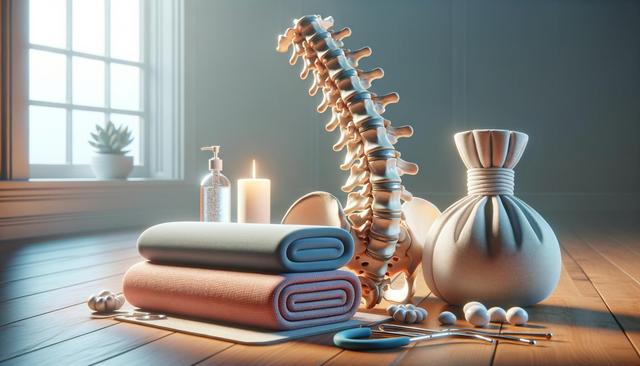Understanding the Common Causes of Back Pain
Back pain can affect people of all ages and lifestyles, and understanding its root causes is a crucial first step in addressing it effectively. Most often, back pain arises from poor posture, sedentary habits, or improper lifting techniques. However, it can also be linked to underlying health concerns such as herniated discs, arthritis, or muscle imbalances. Identifying whether the pain is acute or chronic helps determine the right approach to treatment. Acute pain typically results from a specific incident, like a strain or injury, while chronic pain persists for more than three months and may require a more comprehensive strategy.
It’s important to note that lifestyle factors play a significant role in developing and managing back pain. For example, long hours of sitting at a desk without proper lumbar support can strain the lower back. Similarly, repetitive movements or heavy lifting without proper form can lead to muscle fatigue and injury. Recognizing these habits allows individuals to make small but impactful changes in their daily routines.
Simple At-Home Remedies to Alleviate Pain
There are several effective ways to manage back pain without resorting to invasive procedures or medications. At-home remedies can be surprisingly effective when practiced consistently. One of the easiest methods is applying heat or cold to the affected area. Heat therapy can help relax tight muscles and improve blood flow, while cold packs can reduce inflammation and numb sharp pain.
In addition to temperature therapy, gentle stretching exercises can relieve tension and improve flexibility. Some useful stretches include:
- Knee-to-chest stretch
- Cat-cow pose
- Child’s pose
- Seated spinal twist
Practicing these stretches daily, especially after periods of inactivity, can significantly reduce stiffness and discomfort. Ensuring adequate hydration and maintaining an anti-inflammatory diet rich in fruits, vegetables, and omega-3 fatty acids can also support overall spine health.
Improving Posture and Ergonomics
One of the most effective long-term solutions for back pain is improving posture and ergonomic practices, both at work and home. Poor posture places unnecessary stress on the spine and surrounding muscles. Sitting or standing with a straight back, shoulders relaxed, and feet flat on the ground can distribute body weight more evenly and reduce strain.
Setting up an ergonomic workstation is essential for those who spend long hours in front of a computer. Consider the following adjustments:
- Use a chair with proper lumbar support
- Keep your screen at eye level
- Position your keyboard and mouse at a comfortable height
- Take short breaks every 30–60 minutes to stand and stretch
These small changes can make a big difference in preventing and minimizing back pain. Over time, developing mindful habits around posture and movement can lead to lasting relief.
The Role of Physical Activity and Strength Training
Staying active is a key factor in maintaining spinal health and preventing back pain. While it may seem counterintuitive to move when experiencing discomfort, certain forms of physical activity can actually reduce pain and prevent future issues. Low-impact exercises such as walking, swimming, and cycling help keep the body active without placing excessive strain on the back.
Incorporating strength training exercises can further support the spine by building core stability. Strong abdominal and back muscles provide better support for the spine and reduce the risk of injury. Some effective exercises include:
- Bridges
- Planks
- Bird-dog
- Wall sits
It’s important to start slowly and focus on proper form to avoid aggravating existing pain. Consulting a fitness or rehabilitation specialist can help create a personalized exercise routine that fits individual needs and conditions.
When to Seek Professional Help
While many cases of back pain can be managed with self-care strategies, there are instances where professional help is necessary. If back pain persists for more than a few weeks, worsens over time, or is accompanied by symptoms such as numbness, weakness, or loss of bladder control, it should be evaluated by a healthcare provider. These could be signs of a more serious underlying condition that requires medical attention.
Healthcare professionals may recommend a range of treatments based on the diagnosis. These could include physical therapy, chiropractic care, acupuncture, or in some cases, imaging tests to better understand the cause of the pain. Working with a professional ensures that the treatment plan is safe, effective, and tailored to your specific situation. Being proactive and informed about your health can greatly enhance the recovery process and improve your quality of life.
Conclusion: Taking Control of Your Back Health
Back pain doesn’t have to control your life. By understanding its causes, adopting healthy lifestyle habits, and using simple at-home remedies, you can often find relief with minimal effort. Paying attention to posture, staying active, and knowing when to consult a professional are key steps in managing and preventing discomfort. Whether you’re dealing with occasional aches or persistent pain, small daily adjustments can lead to noticeable improvements. Taking control of your back health today can help you enjoy greater comfort and mobility in the future.




Leave a Reply